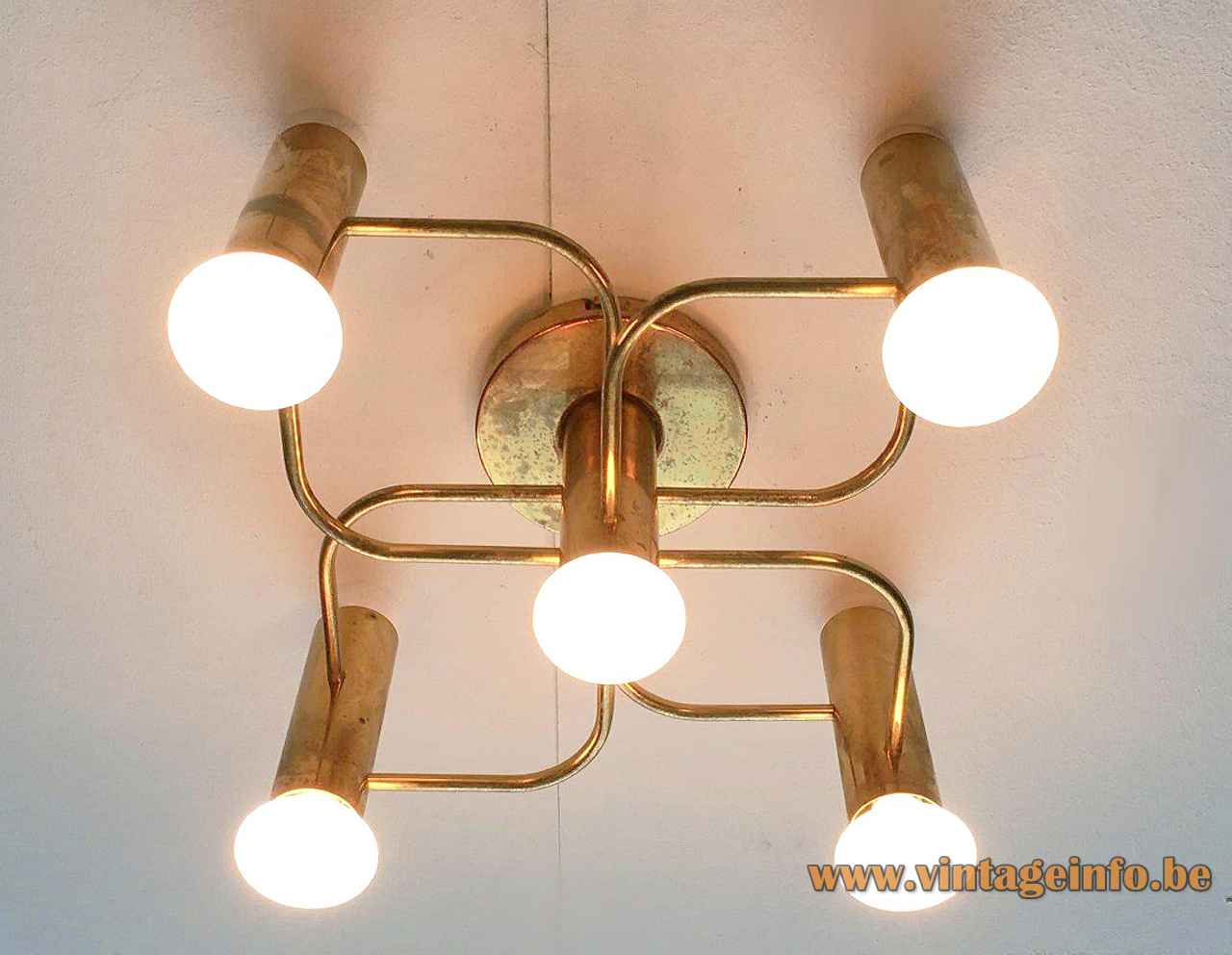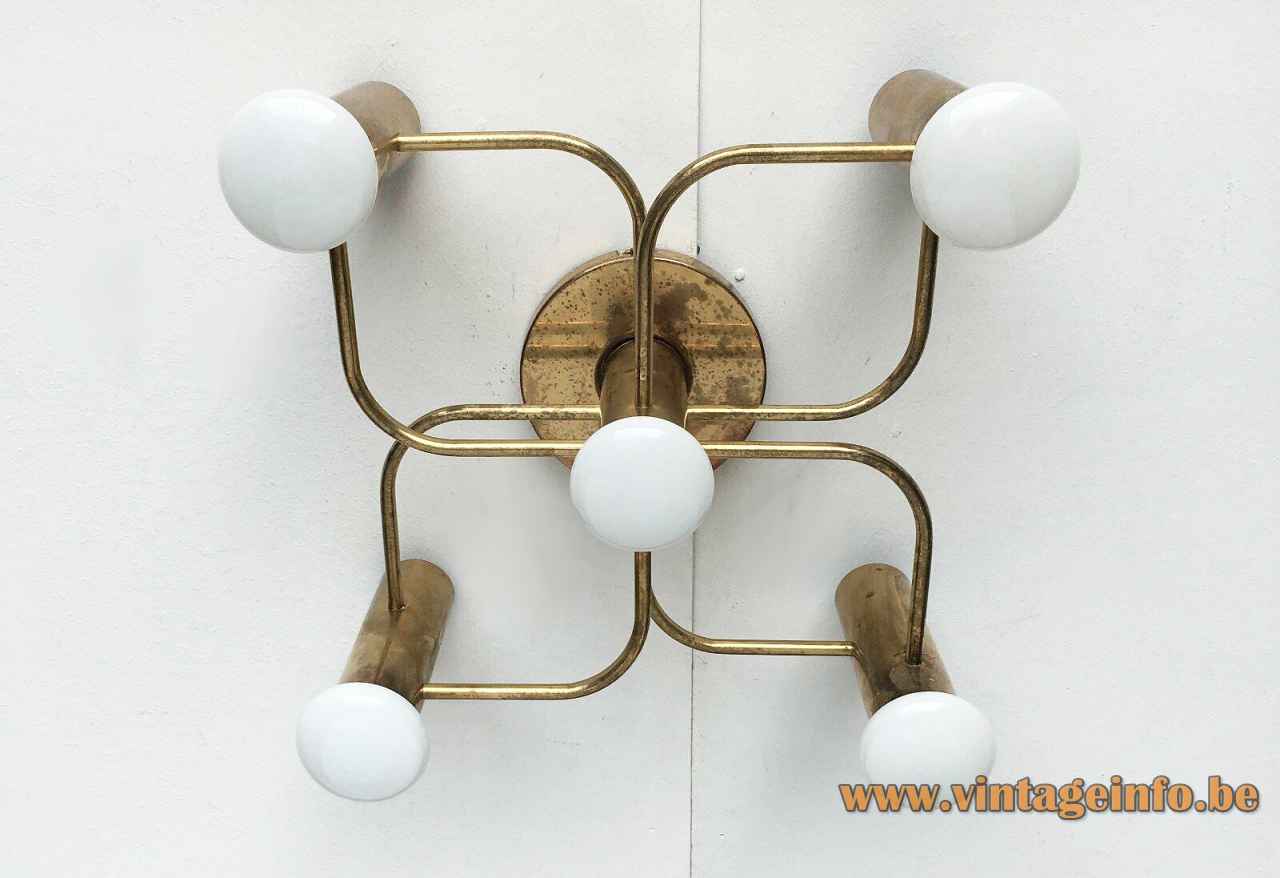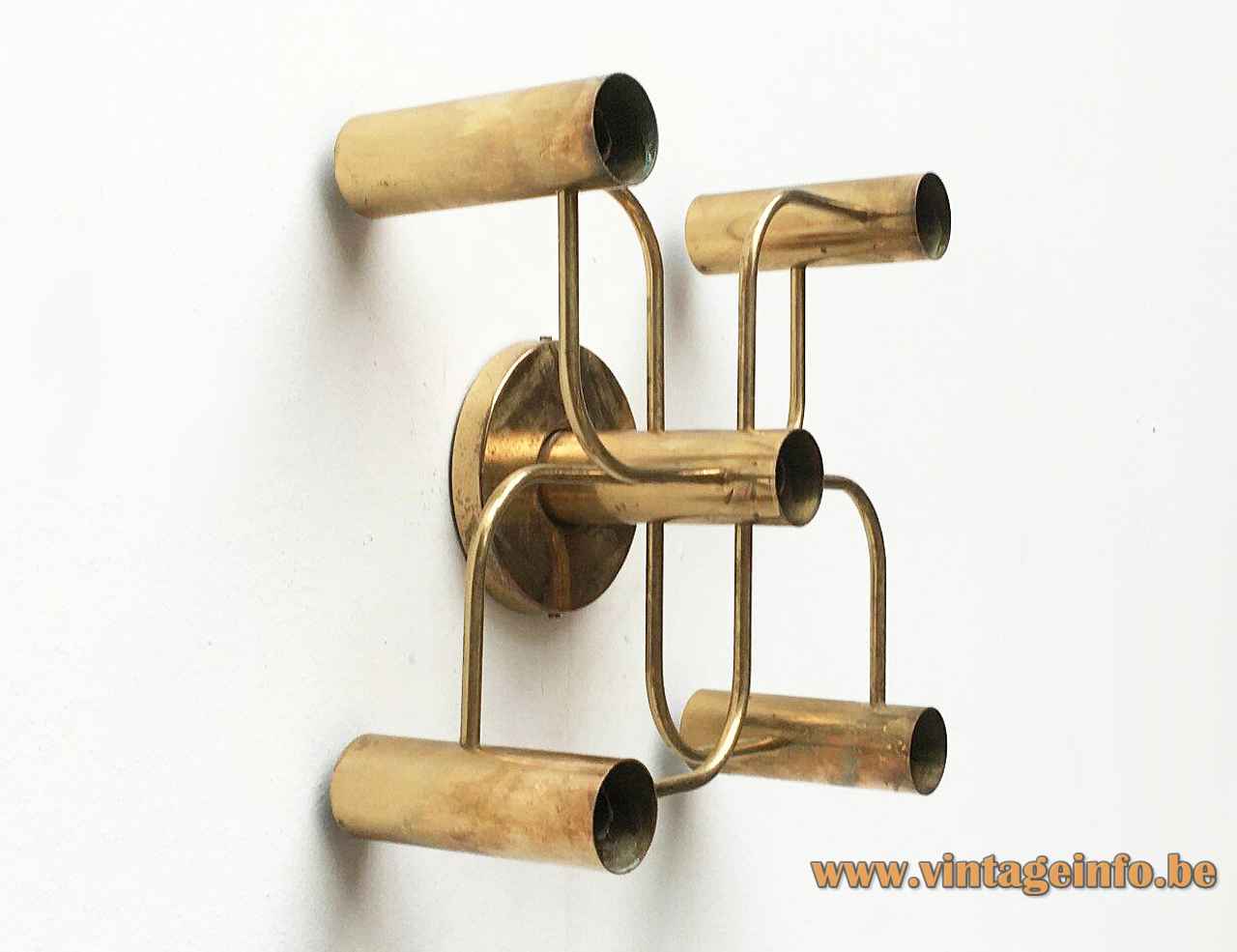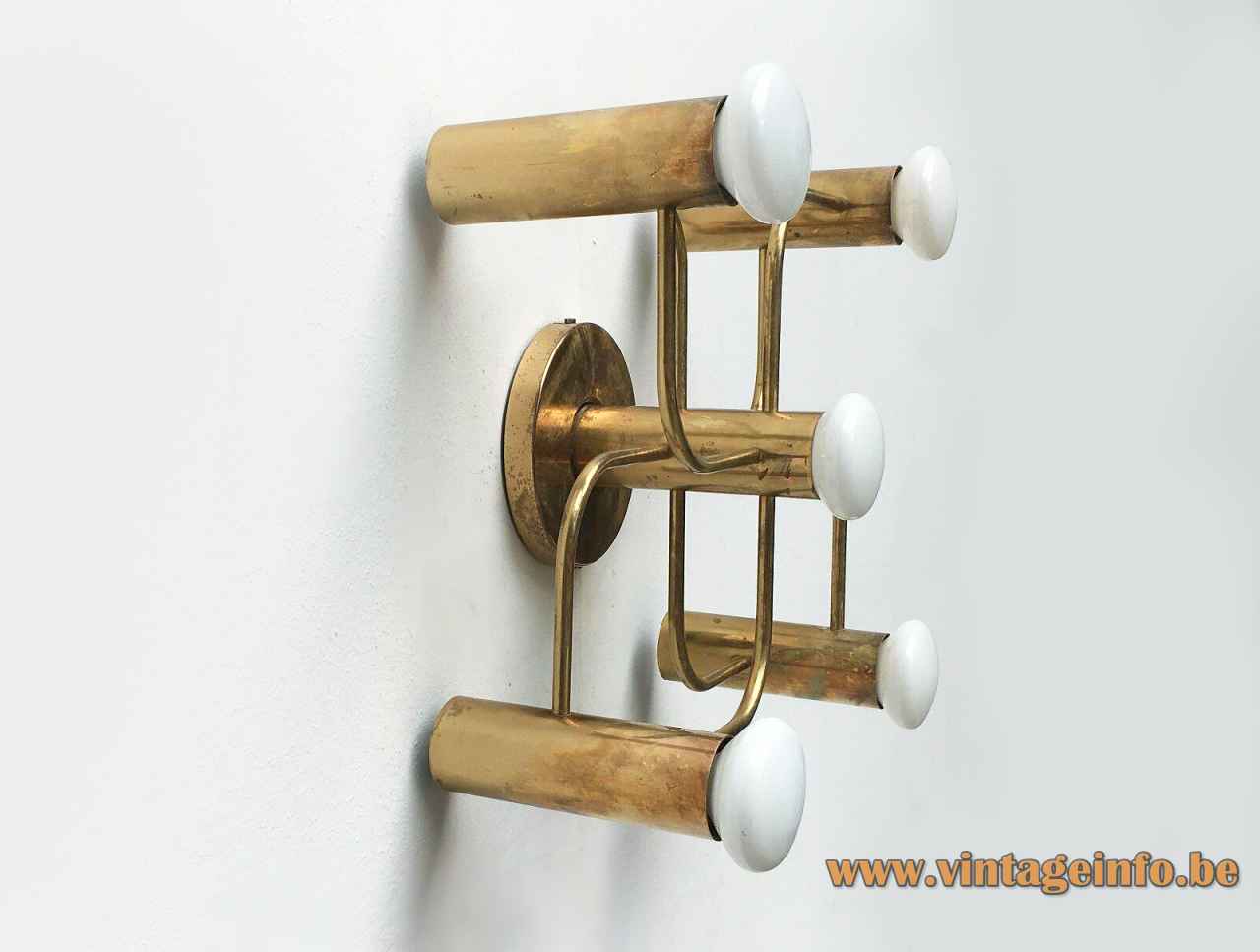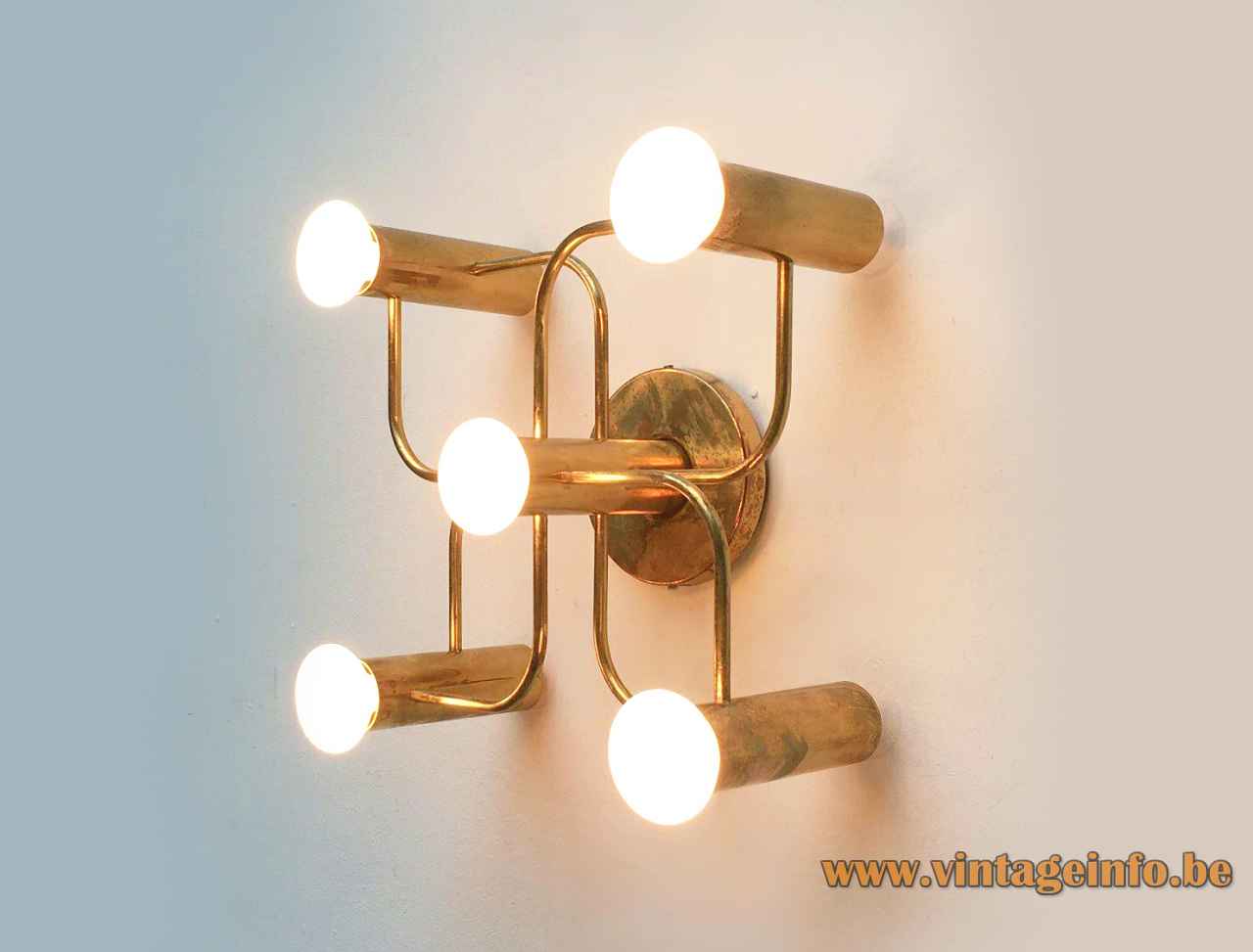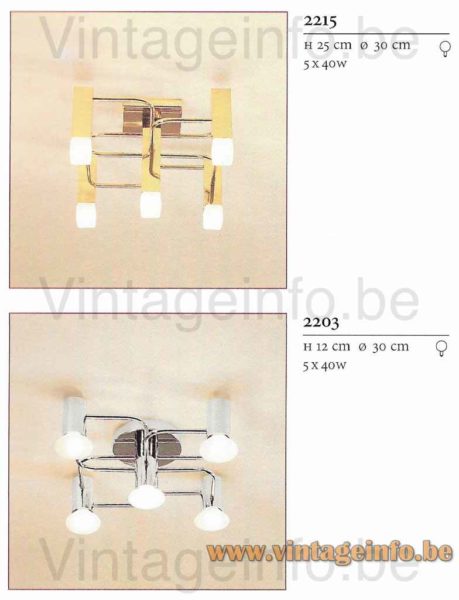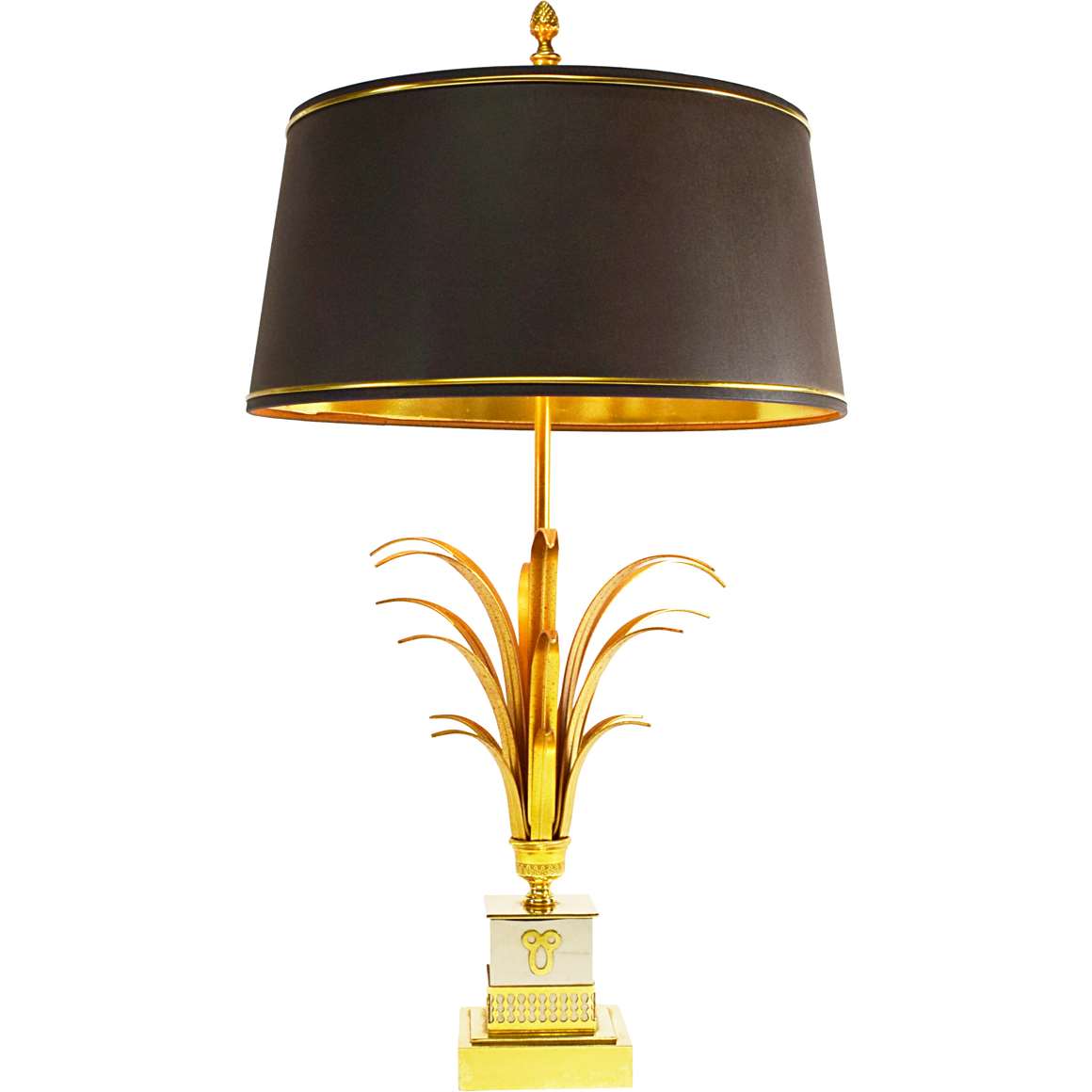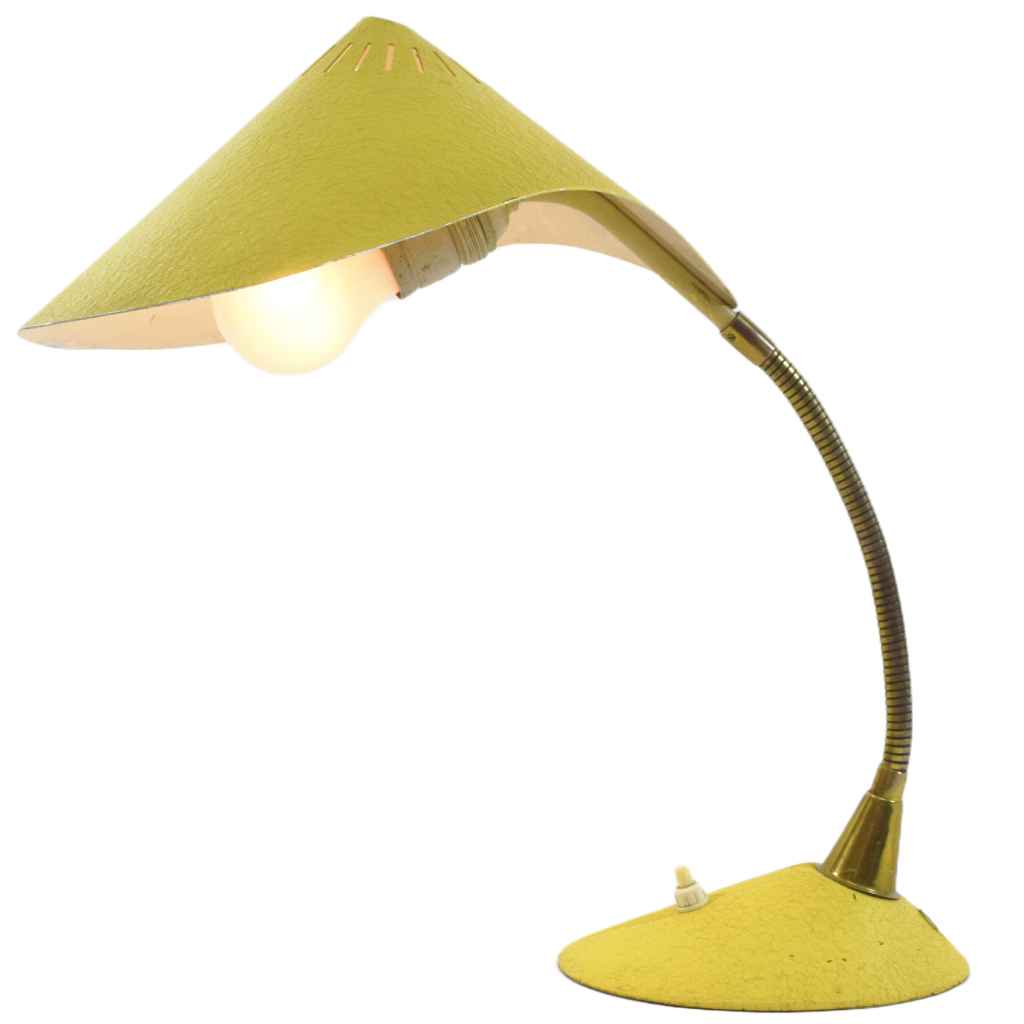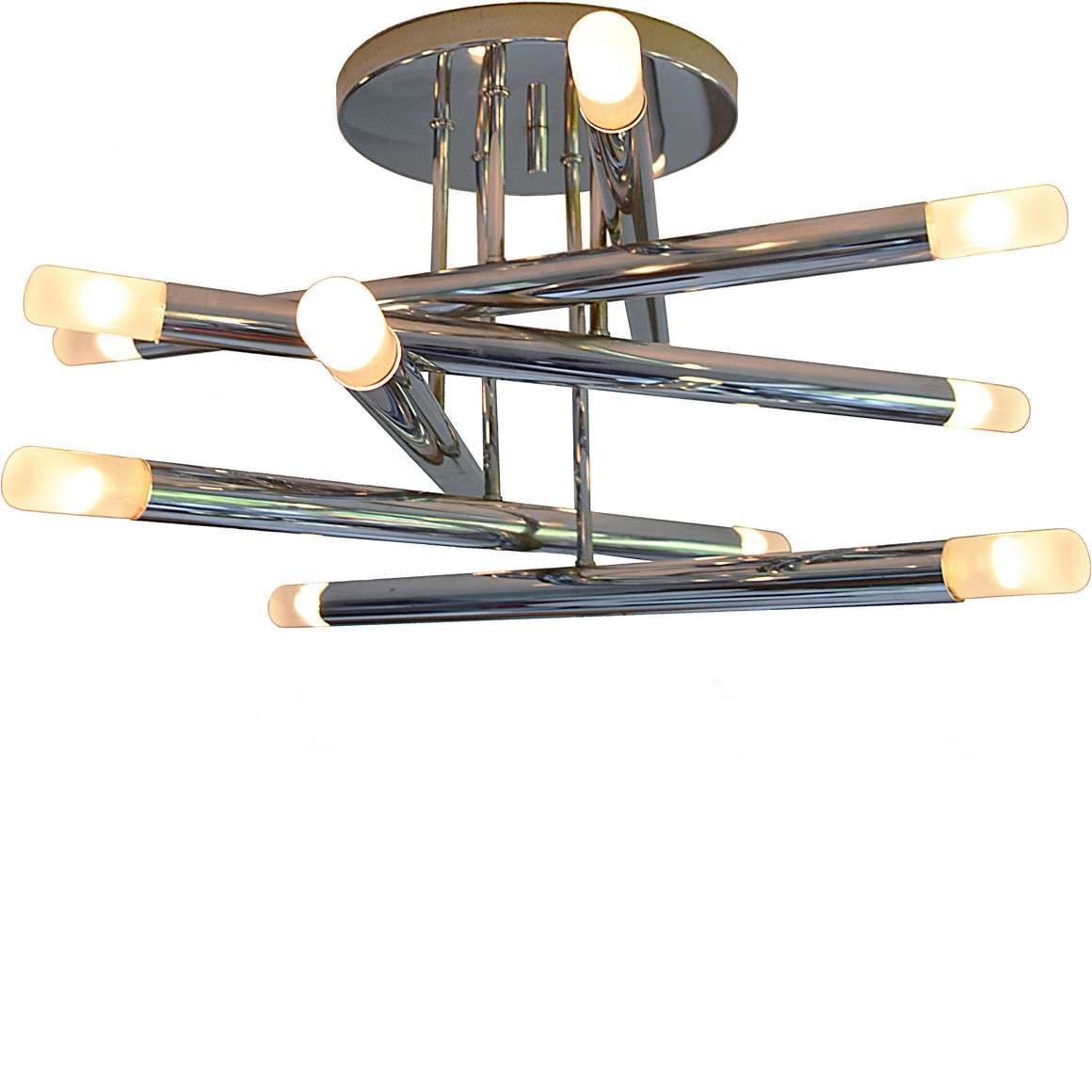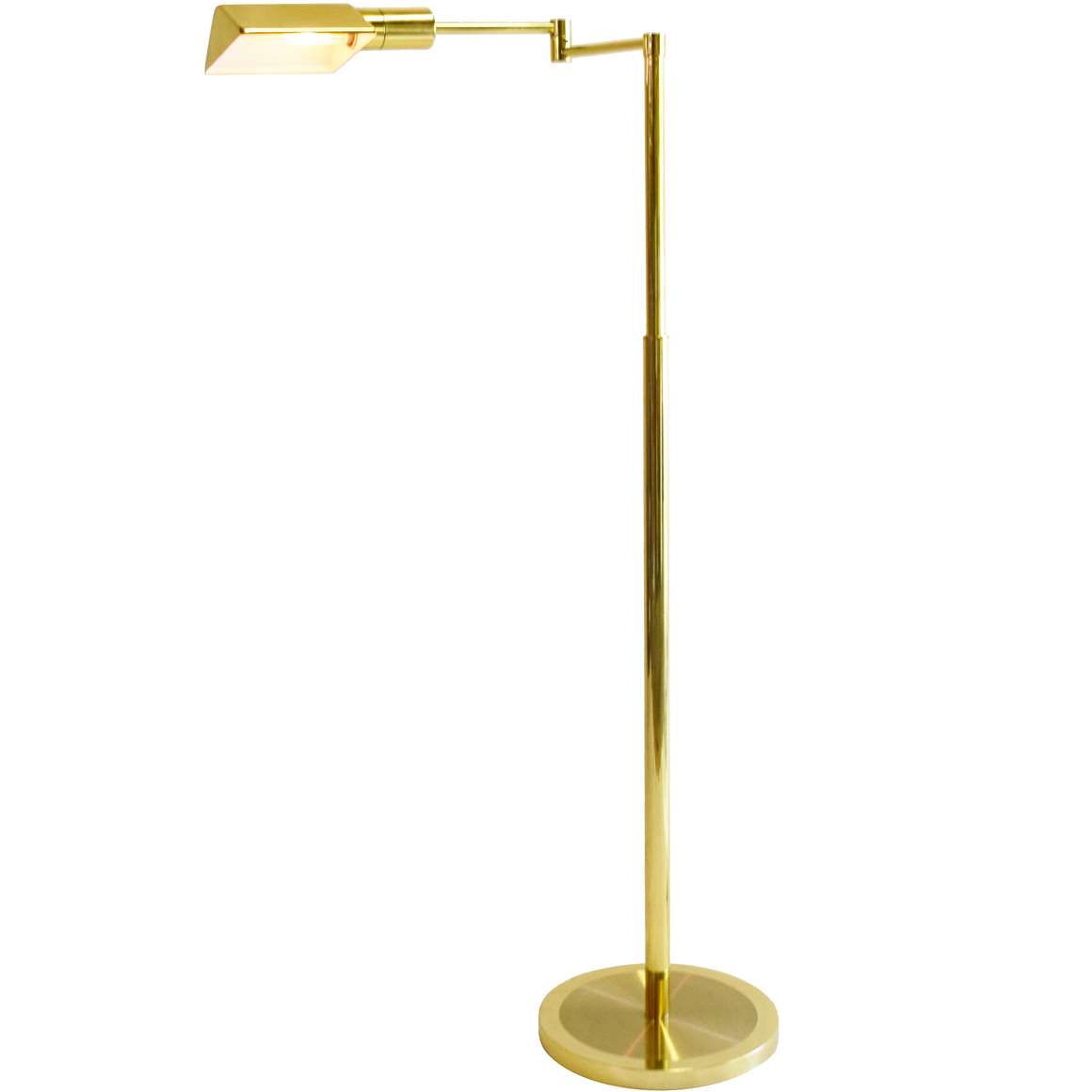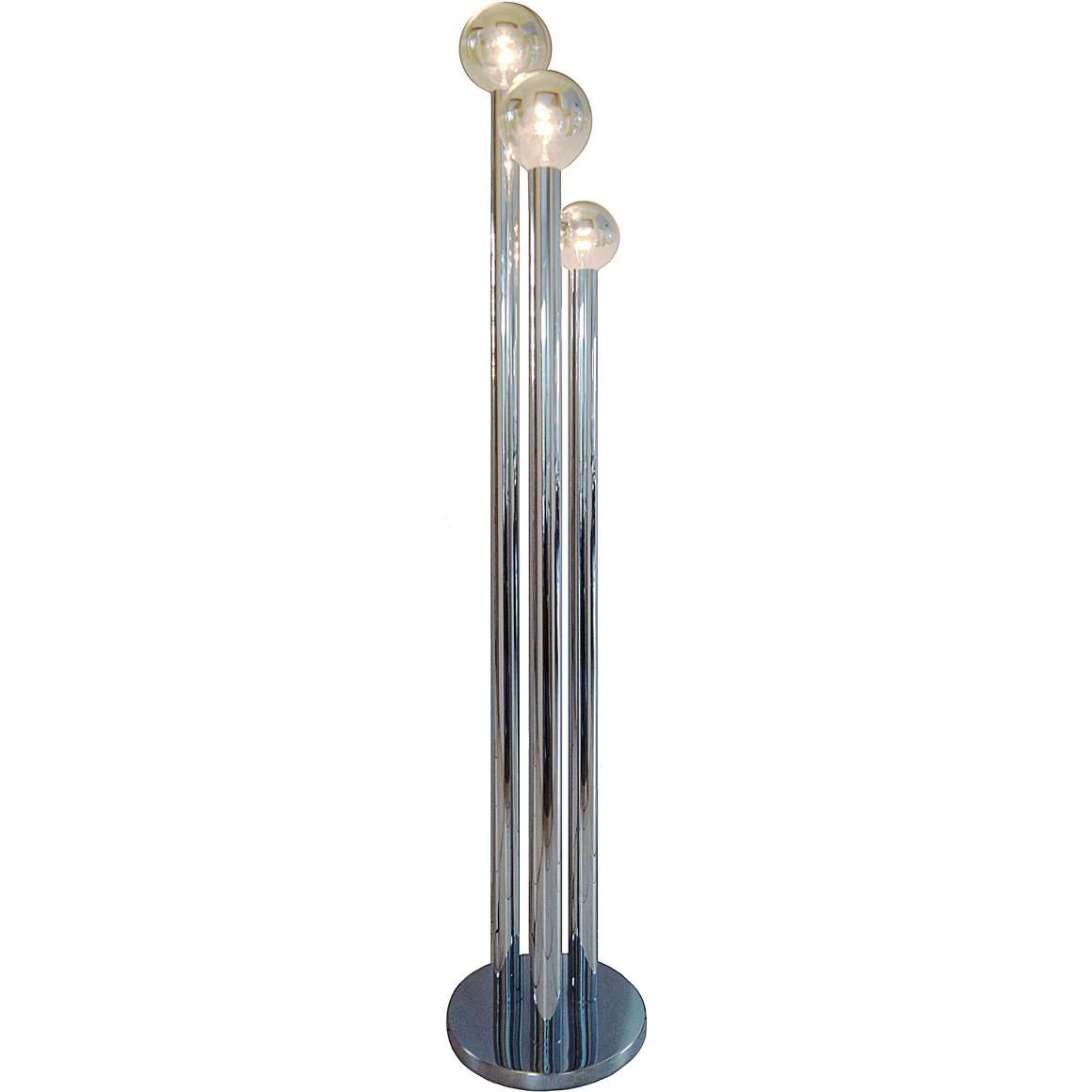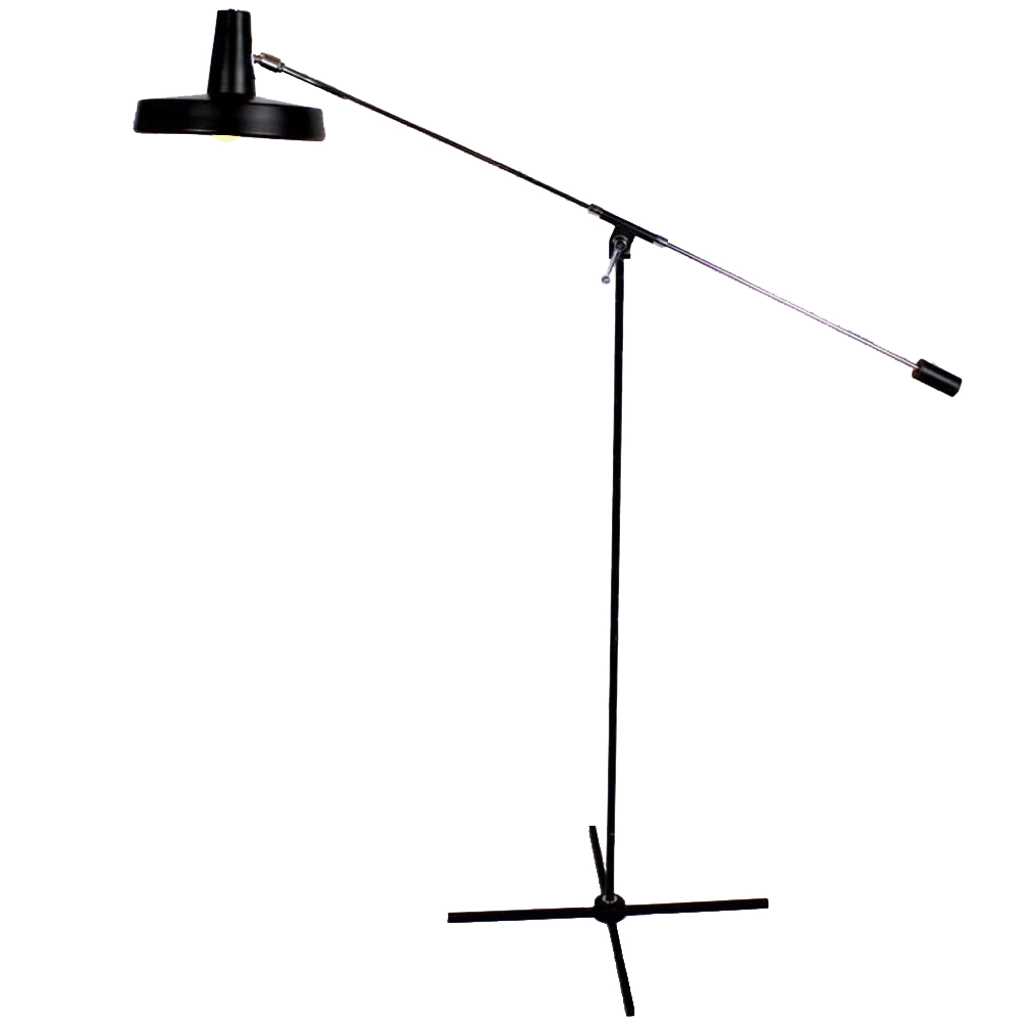Leola Brass Flush Mount – 1980s Boulanger Catalogue Picture
Leola brass flush mount – E14 light bulbs Neolamp, Leuci
Links (external links open in a new window)
Vintageinfo
Many thanks to Frank from nullviernull raum+kommunikation for the pictures. You can find his shop over here on Pamono.
Many thanks to Max from AfterMidnight for the catalogue pictures.
Leola Brass Flush Mount
Materials: 5 brass tubes. Curved brass rods. Round brass mount. Some metal parts. 5 E14 sockets.
Height: 17,5 cm / 6.88”
Width: 35 x 35 cm / 13.77 x 13.77”
Electricity: 5bulbs E14, 5 x 40 watt maximum, 110/220 volt.
Anytypeof light bulb canbeused. Not a specific one preferred. But the original ones used are these bulbs.
Period: 1970s – Mid-Century Modern.
Designer: Gaetano Sciolari – attributed.
Manufacturer: Leola-Leuchte GmbH, Leyherstraße 14, Fuerth, Germany.
Other versions: This Leola brass flush mount exists in several variations and sizes. Also chrome versions exists. Sometimes you see these lamps used as a wall lamp.
As you can see from the catalog photo, it’s likely that the Belgian company Boulanger made the lamp and that Leola sold it in Germany. The lamp is certainly identical.
LEOLA
The German company LEOLA was originally based in the Leyherstraße 14 in Fürth. The exact year of its founding is unknown for the moment, but a catalogue from 1973 confirms that the company was active at least by then.
In 2009, LEOLA relocated to Schweppermannstraße 77 in 90409 Nuremberg, and in 2012 it moved again to Ostendstraße 241. The company’s last managing director was Michael Pietsch.
While LEOLA distributed a wide range of lamps from other manufacturers, it also produced its own designs. Notably, designers such as Cari Zalloni and Gaetano Sciolari created pieces for the company.
LEOLA was officially liquidated in 2017, though its website remained online until 2020. An archived version of the site can still be accessed through the link below.
Light bulbs
The light bulbs used for these flush mounts are Centaurus light bulbs made by Neolamp. Also silver tipped or gold tipped light bulbs were used. Leuci produced them under the name Astrolux 2000 Hours, also Neolamp made them. Several other companies produced these bulbs, such as the Lindner Eldea bulbs and Paulmann. You find them sometimes for sale on website such as Ebay.
Angelo Gaetano Sciolari
Angelo Sciolari graduated with a degree in architecture but wanted to be a filmmaker. This course came to an abrupt end when in 1949 his father suddenly died and he took over the Sciolari Lighting company at the age of 22.
His first designs in the 1950s were Sputnik inspired pendants; of course it was the space age.
In the 1960s he created refined, futuristic and sharp classical style chandeliers. Lines were clean and sculptural and materials such as crystal and ice glass sparkled with a voluptuously luxurious coolness and he started combining brass with chrome.
He led the family business with a passionate vision and within years, he expanded the business and started working with other light companies worldwide.
Gaetano Sciolari created lights for Stilnovo and Stilkronen (Italy), Lightolier and Progress Lighting (USA), S.A. Boulanger (Belgium), Helestra and Leola (Germany), Lyfa (Denmark) and some other companies and of course for his own Italian family business; the Sciolari company in Rome and Milan; where all the lighting business at that time was present.
Sciolari was the founder and the first president of the trade association of Italian manufacturers of lighting fixtures, the AIDI. The Associazione Italiana di Illuminazione was founded in 1958 and still exists today.
S.A. Boulanger
S.A. Boulanger was founded in Anderlecht, Belgium in 1945. The company is famous for the large amount of lights it produced that were designed by Gaetano Sciolari. At some point in the 1980s the company changed their name in Les Ateliers Boulanger NV.
It has long been thought that they were two different companies, but that is because a trader from Liège, Belgium persisted that the lamps came from Herstal, near Liège.
In 1996 the company had 11 employees. The firm moved in 1998 to the Martelarenlaan 155 in 3010 Kessel-Lo, near Leuven. In the period 1995 – 2001 Jean-Philippe Spalart was the CEO. He did a feasibility study for the transfer of the company to China, Eastern Europe and Africa. Relocation of the manufacture in Zimbabwe.
Boulanger was specialised in metal processing and manufacturers high-end lamps and lighting fixtures. Les Ateliers Boulanger ended business in 2006.
Massive & Boulanger
Massive sold several Boulanger models over the years. The only difference is the typical Massive canopy/ceiling cap and some other parts.
Old text from the 1990s
“Boulanger sells mainly in the high-end lighting markets in Belgium, Germany and Luxembourg. The growing sales in the US and in South Africa are of growing importance to the company. Due to the highly competitive market, having product with a high added value is very important. The intelligent lamp is an important advantage, compared to our competitors, and will increase our market share in an important way.
The most important local competitors are Massive, a Belgian company, market leader in Europe (turnover of 100 MEUR), Deknudt at Deerlijk (turnover 2.5 MEUR) and some 10 other Belgian competitors of its own size. There is important competition from southern European and Asian competitors. The market share of Boulanger is only a few percent of the share of the Belgian companies. It is a small company with a turnover of about 300 k EURO.”
“Most Boulanger lamps are low voltage and halogen lamps (220V up to 300W or 12V up to 50W).
The products are sold to retail shops. In Belgium, about 300 retail shops sell its products. There are around 40 retail shops abroad: Luxembourg, Germany, France and South Africa.”

